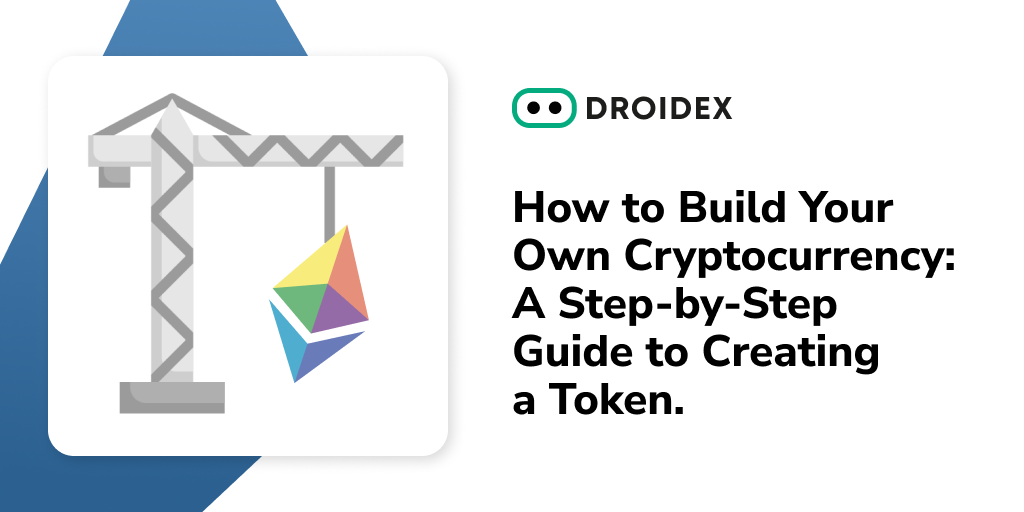Cryptocurrencies have become increasingly popular over the last few years. They have brought about a new wave of innovation, investment, and financial opportunities. While many people have invested in cryptocurrencies, others have taken it one step further and created their own tokens. Creating your own cryptocurrency can be a great way to raise capital, build a community, and promote your brand. In this article, we will guide you through the step-by-step process of creating your own cryptocurrency.
Step 1: Determine the Purpose of Your Token

Before you begin creating your cryptocurrency, you need to determine its purpose. What problem does it solve? Is it meant to be a utility token or a security token? Understanding the purpose of your token will help you determine its characteristics, such as its supply, distribution, and use cases.
If you plan to use your token as a utility token, it will be used to access a particular service or product that you offer. For example, if you have a gaming platform, your token could be used to purchase in-game items or access premium features. On the other hand, if you plan to use your token as a security token, it will represent ownership of a particular asset or investment. This is subject to regulatory requirements and would need legal advice from an expert.
Step 2: Choose a Blockchain Platform

Once you have determined the purpose of your token, you need to choose a blockchain platform. Ethereum is currently the most popular platform for creating tokens, but there are other options such as Binance Smart Chain, Solana, Polkadot, and more.
Ethereum is popular due to its ease of use and smart contract capabilities. It has a large community of developers, making it easier to find resources and support. Binance Smart Chain, on the other hand, is known for its fast transaction times and low fees. You should choose a blockchain platform based on your token’s requirements and your technical expertise.
Step 3: Define Your Token’s Characteristics

The next step is to define your token’s characteristics. This includes its name, symbol, supply, distribution, and more. The name and symbol of your token should be unique and easy to remember. You should also determine the total supply of your token, which can be either fixed or variable.
Token distribution is another critical aspect of creating your cryptocurrency. You need to decide how you will distribute your tokens, such as through a public sale, private sale, or airdrop. You also need to determine the initial price of your token and how it will be listed on exchanges.
Step 4: Write a Smart Contract

Now that you have defined your token’s characteristics, you need to write a smart contract. Droidex actually work on it right now. A smart contract is a self-executing contract with the terms of the agreement between the buyer and seller being directly written into lines of code. A smart contract is essential because it defines the rules and regulations of your token.
Writing a smart contract can be challenging, especially if you don’t have any coding experience. You can either hire a developer to write the smart contract for you or use a pre-made template. There are many templates available online that you can use as a starting point, but you should customize it to fit your specific needs.
Step 5: Test Your Smart Contract

Before launching your token, you need to test your smart contract. This is to ensure that your smart contract is working correctly and is free from errors. Testing your smart contract can help you identify any bugs or vulnerabilities in your code, which can be fixed before launch.
You can test your smart contract using a testnet, which is a separate blockchain network that is used for testing purposes. Ethereum has several testnets, such as Rinkeby and Ropsten, that you can use to test your smart contract.
Step 6: Deploy Your Smart Contract

After testing your smart contract, it’s time to deploy it to the mainnet. The mainnet is the live blockchain network where your token will be available for use. Deploying your smart contract to the mainnet requires you to pay a fee, known as gas fees, which are paid in cryptocurrency.
The process of deploying your smart contract can vary depending on the blockchain platform you have chosen. In general, you will need to connect to the mainnet using a wallet, such as Metamask, and then deploy your smart contract using a tool such as Remix or Truffle.
Step 7: List Your Token on Exchanges

After deploying your smart contract to the mainnet, you need to list your token on exchanges. Listing your token on exchanges will make it available for trading and increase its liquidity. It can also help increase the value of your token.
There are many exchanges that you can list your token on, such as Binance, Coinbase, and Uniswap. Each exchange has its own requirements for listing tokens, so you should research and comply with their guidelines.
Step 8: Market Your Token

Once your token is listed on exchanges, you need to market it. Marketing your token is essential to increase its adoption and value. You can use social media, such as Twitter and Telegram, to promote your token and engage with your community. You can also collaborate with influencers and conduct airdrops to attract more users.
It’s important to note that marketing your token requires you to comply with regulatory requirements. You should consult with a legal expert to ensure that your marketing efforts are compliant.
Step 9: Maintain and Improve Your Token

After launching your token, you need to maintain and improve it. This includes fixing any bugs or vulnerabilities, updating your smart contract, and adding new features. You should also continue to engage with your community and listen to their feedback.
Conclusion
Creating your own cryptocurrency can be a rewarding experience, but it requires time, effort, and expertise. Before creating your cryptocurrency, you need to determine its purpose, choose a blockchain platform, define its characteristics, write a smart contract, test it, deploy it to the mainnet, list it on exchanges, market it, and maintain and improve it. By following these steps, you can create a successful cryptocurrency that solves a problem, attracts users, and increases in value.

